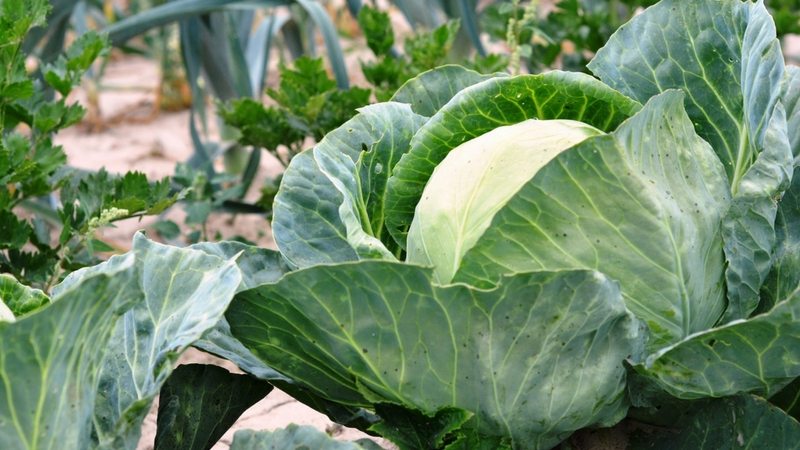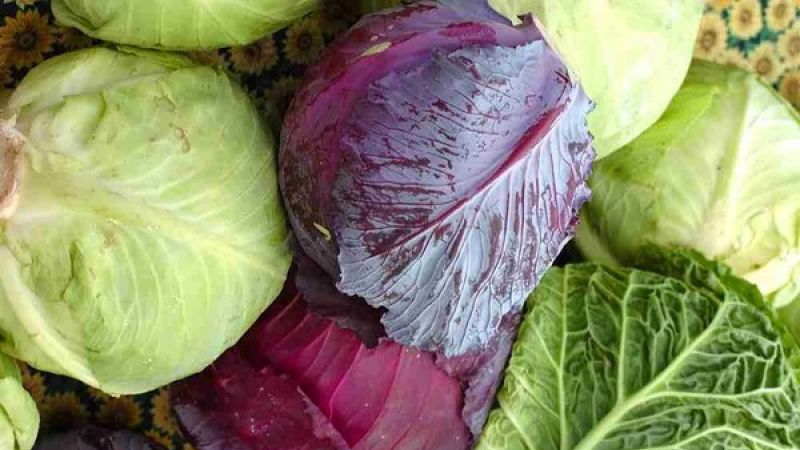Proven ways to keep cabbage fresh on the balcony in winter
White cabbage is one of the most popular and indispensable vegetables in cooking, which housewives use all year round. Owners of their own homes solve the problem of long-term storage of crops with the help of cellars. The most suitable place in the apartment is the balcony. Read on in the article to find out how to preserve cabbage on a balcony or loggia in winter.
Is it possible to store cabbage on the balcony in winter?
One or two heads of cabbage easily fit in the refrigerator, and a large volume of preparations is placed on the balcony. Vegetables retain their beneficial properties and vitamin composition even at low temperatures and light frosts - down to -1...-2°C.
With a further decrease in temperature, the leaves become soft, lose their elasticity, and the taste of the product deteriorates significantly. Therefore for storage Insulated rooms protected from rain and snow are suitable.
Suitable varieties

Until the next harvest are stored only late and mid-late varieties.
The shelf life of early ripe cabbage does not exceed 1-2 months; it lasts until the new year at most.
Ideal options for winter storage:
- Aggressor F1;
- Amager 611;
- Valentina F1;
- Snow White;
- Kolobok;
- Langedijker;
- Mom F1;
- Moscow late;
- Wintering 1474;
- Turkiz;
- Present.
These varieties and hybrids are stored for 7-8 months without spoilage or rot in a vegetable storehouse or prepared cellars. They do not lose their taste and retain their impeccable appearance.
Preparatory stage
Before sending for winter storage, cabbage is prepared and sorted. Rotten and spoiled vegetables are thrown away, damaged ones are used for food within 2-3 weeks - they will not last long.
Selecting and preparing cabbage

For laying on the balcony, choose medium-sized heads of cabbage, elastic and tight, with dense and properly formed leaf mass, preferably slightly flattened. Vegetables are inspected for the presence of slugs and mold - they significantly reduce the winter shelf life.
Features of harvesting
The order of harvesting plays an important role. Cabbage is removed from the beds on a warm, dry and sunny day. The heads of cabbage are pulled out carefully, trying not to damage the stalk, along with the root. The remaining soil is shaken off and the top leaves are removed. After harvesting, the harvest is laid out on the veranda for several days, avoiding moisture.
Then the cabbage is transferred to a cool pantry for 10-12 days. In such conditions, the crop dries out from excess moisture and prepares for a long winter on the balcony.
Important! During the preparation of the heads of cabbage, care should be taken to ensure that rodents do not appear. In pantries and cellars they often spoil quality harvests.
Preparing the balcony
The storage room for cabbage must meet certain conditions. The temperature on the balcony is not allowed below -2°C and above +5°C.
Optimal humidity is within 80%. Before storing the crop, shelves or boxes are made, and a separate place is equipped, depending on the chosen storage method.
Storage methods
The placement of cabbage on the balcony is determined by the size of the room. It is important to consider the proximity to other cultures and ease of access.
Suspended
For tying, use ropes made from bandages or cut gauze.After removing the top leaves, the heads of cabbage are tied by the root part and stalk. Hang vegetables in any accessible place - on equipped racks or cabinets.
In boxes
One of the simplest methods is to pack vegetables in wooden boxes. It is allowed to place forks in no more than two layers. Choose boxes with holes for air access. This method has a drawback: close contact causes the heads of cabbage to deteriorate and rot faster. Periodically, the forks are checked and turned over.
In clay
 Clay promotes long-term preservation of cabbage and other vegetables and prevents spoilage and rotting.
Clay promotes long-term preservation of cabbage and other vegetables and prevents spoilage and rotting.
The method is labor-intensive and time-consuming, but the result will please you. The clay is diluted with cool water until pureed.
Each head of cabbage is coated with a thick layer and left until completely dry. After this, they are placed on shelves on the balcony.
In sand
With this storage method, the stalk is not cut off, the roots are also left. The heads of cabbage, cleared of remaining soil, are compacted with the stalk down into dry sand.
The root part goes completely deep. To store in sand, use plastic containers or wooden boxes, which are convenient to install on the balcony.
In paper
To wrap the forks, use regular newspapers, but if they are unavailable, white office paper will also work. First, wilted or dry leaves are removed from the heads of cabbage; the stalk is not cut off.
Each specimen is separately wrapped in two layers and laid out so that the stalk is at the bottom. This layout option is allowed on mounds of potatoes, as well as on jars with blanks. Placing forks without touching each other extends shelf life.
In the chalk
This method requires chalk or slaked lime.Cut, peeled and aged heads of cabbage for several days are dusted with a dense chalky layer. Such a crop is protected from rotting, withering and cracking.
Shelf life
Unlike indoor conditions, where cabbage lasts no more than 7-8 days, on the balcony it lasts up to 5 months. Temperatures below -2°C, as well as sudden changes, are not allowed.
When packed in film, vegetables are periodically inspected for the presence of condensation, which also shortens the wintering period.
This is interesting:
Proven ways to store Brussels sprouts for the winter in fresh, frozen and canned form.
Conclusion
Storing cabbage on the balcony in your apartment is a simple and affordable way to preserve your harvest throughout the winter. If the temperature conditions and acceptable humidity are observed, vegetables will last until spring and retain their freshness, crunch, elasticity and beneficial properties.
Thanks to simple and accessible means and materials, the wintering period is significantly extended.